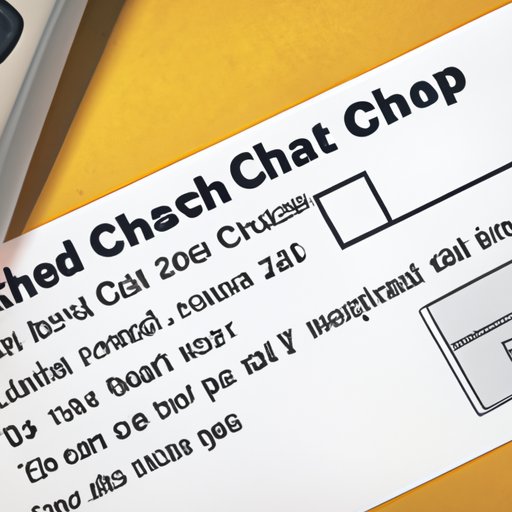
I. Introduction
It can be frustrating to have a check and not be able to cash it due to a lack of proper identification. Whether you lost your ID, don’t have one, or it’s expired, there are options available to you. The purpose of this article is to provide solutions for cashing a check without an ID. We will explore a variety of methods to help you get your money quickly and easily.
II. Asking Someone to Cash the Check on Your Behalf
One option is to ask someone you trust, such as a family member or close friend, to cash the check on your behalf. This person will have to show their ID and endorse the check. It’s important to choose someone you trust because they will have access to your money.
However, there are legal considerations to keep in mind when using this method. According to the Uniform Commercial Code (UCC), a person who signs a check becomes its legal holder. This means that if the person you ask to cash your check keeps the money or uses it improperly, it can be difficult to seek legal recourse.
III. Using a Retail Store with Check-Cashing Services
Many retail stores, such as Walmart, offer check-cashing services for a fee. They typically require a valid ID, but some may accept other forms of identification or ask for additional verification, such as your social security number or a fingerprint.
Before choosing a store, compare their fees and requirements. Fees can range from a percentage of the check amount to a flat fee. Some stores may also have limits on the amount they can cash. Look for a store that is reliable and has good reviews. Be sure to ask about their policies and procedures in case of fraud or other issues.
IV. Endorsing the Check Over to Someone Else
Endorsing a check over to someone else means signing the back of the check and giving it to another person to cash. This option can be risky because once you endorse the check, you are no longer the legal holder, and the person you give it to can potentially keep the money or use it fraudulently.
If you choose this method, make sure you are giving the check to someone you trust and who is willing to show their ID to cash it. Additionally, take steps to secure the check, such as using a secure envelope or mailing it with tracking.
V. Using a Prepaid Debit Card
A prepaid debit card is a card that you can load with funds and use like a regular debit card. Some providers offer check-cashing services for a fee, and you can use the funds to load your card. Prepaid debit cards don’t require a credit check, but they may have monthly fees and other charges.
Before choosing a prepaid debit card, compare fees and features, such as ATM access, mobile banking, and overdraft protection. Look for a card with low fees and convenient features that meet your needs.
VI. Opening a Bank Account
Opening a bank account is another option for cashing a check. Although it may take more time and effort, it can be a good long-term solution if you frequently receive checks. Banks require proper identification to open an account, but once you do, you can deposit checks and have access to your money whenever you need it.
Before opening an account, research different banks to find one that meets your needs. Look for a bank with low fees, convenient ATM locations, and good customer service. Consider online banks and credit unions as well, as they may offer better rates and fees than traditional banks.
VII. Contacting the Issuing Bank
If all else fails, you can try contacting the issuing bank to cash the check. The bank may require additional verification, such as your social security number or proof of ownership of the account the check is drawn from. If the bank is not willing to cash the check, you can try contacting the person or company who wrote the check and ask for a new payment method or a replacement check.
VIII. Conclusion
There are several methods to cash a check without ID, each with its advantages and disadvantages. Asking someone you trust, using a retail store with check-cashing services, endorsing the check over to someone else, using a prepaid debit card, opening a bank account, and contacting the issuing bank are all viable options. Whatever method you choose, be sure to do your research, read the fine print, and take steps to protect your money.
Remember, seeking professional advice may be necessary in some situations, such as legal issues. Always err on the side of caution and don’t hesitate to ask for help if you need it.




